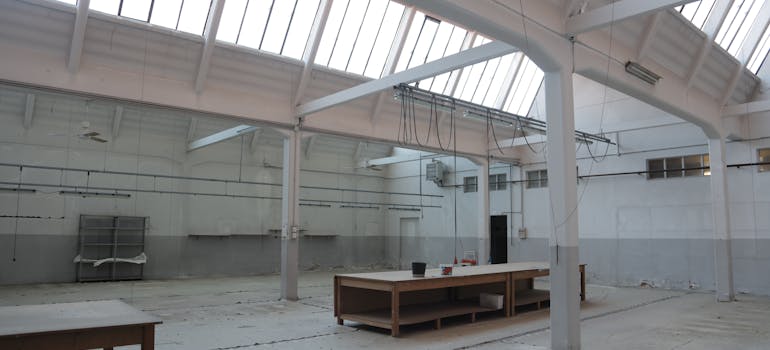The Valuation Question:
Cash Flow Or Cap Rates
In the commercial real estate world, most investors apply value to a property through something called the capitalization rate or, quite simply, the cap rate. The term is universal and means the investment return based on the income that property is expected to generate. Getting to that cap rate is fairly straight forward: It is the ratio between the net operating income (called NOI) produced by the property and the original cost of capital.
As Aaron Swerdlin, vice chairman of Newmark Knight Frank in Houston, notes, “The cap rates is widely used across the general investment community for a lot of product types, and it is an easy way to put everything through a common lens.”
So why then does Swerdlin eschew the cap rate in self-storage deals?
With retail, industrial, and office properties, for example, where leases are long term with predictable rent increases and expenses are typically passed through to the tenants, the cap rates actually mean something. “That this is the return I expect on this piece of real estate,” says Swerdlin.
In the self-storage world, nothing is that easy. When someone quotes a cap rate, are they using 12-month income, forward-12-month-projected income, adjusted-real-estate taxes based upon a sale, or in-place real estate taxes which never stay the same? Is someone using trailing expenses from a mom-and-pop operator or proforma expenses from an institutional operator?
“It is completely likely and probable that in the same self-storage transaction, one person can say it was a 4.5 percent cap rate and another can say it was a six percent cap rate and neither one of them would be wrong,” says Swerdlin.
Swerdlin prefers to use stabilized returns, which, he says, “takes the noise out of the scenario, because what you are essentially saying is, ‘I don’t care what cap rates were in the past; I don’t care what you think they are going to be. I want to know when you expect the cash flow to stabilize and what kind of return you want when that happens’.”
He is not alone in regard to stabilized returns. John Good, president and COO of Jernigan Capital in Memphis, Tenn., says, “While buyers and analysts often focus on the cap rate paid for a property, the cap rate is really less relevant than the earning power and growth prospects of the asset longer term. Also, cap rates come in different shapes and sizes. For example, does the cap rate reflect trailing NOI, adjusted trailing NOI, proforma NOI? There is just not the uniformity for it to be a determinative metric.”
A lot of this kind of thinking has come from the analyst community that follows the self-storage stocks. “Analysts will pay some attention to cap rates,” says Good. “They will try to imply an asset-value based on those cap rates, but at the end of day the earnings of the companies drive valuations. Having a good stabilized yield is more important.”
Investment Yield
Ultimately, as an investor, someone holding the real estate asset, what you should really care about is the investment yield as opposed to the cap rate, adds Kate Spencer, managing director and self-storage practice group leader for Cushman & Wakefield in Dallas. “If you going to hold the property, you don’t really care about what the value is per se,” she says. “The yield is going to be the more important number. Stabilization represents the success of the investment. You are getting a good return, and this was the best place to invest your capital.”
“We try to focus our discussions around stabilized returns and that could be 12 months out or 18 months out, basically a point forward in time when a new buyer feels that all of the systems are firing on all cylinders and they got their tenant insurance program and fee structures in place,” says Swerdlin. “We can then make an assumption as to a stabilized return based on projected occupancy, revenues, and expenses; that all the adjustment had been made and rents are growing at pace.”
Where the market gets interesting is if a property has opened in the last year or two and is just 30 percent or 50 percent leased, when clearly it is not stabilized, says Steve Mellon, lead of JJL’s Self Storage Team in Houston. “Let’s say it’s a large institutional quality property that normally a real estate investment trust would find interesting. But, REITs prefer cash flowing properties with real NOI. It is hard for the REITs to buy properties that are not cash flowing. If a REIT has an X dividend and it buys a property where the yield is below X, that is not accretive and actually dilutes cash flow or EBITDA (earnings before interest, taxes, depreciation, and amortization). REITs are not aggressive on lease-up properties while other companies are.”
Mellon adds, “Look ahead two to three years to see when projects would be able to stabilize. What we have seen in the market is if we bring out a property that is 45 percent leased and open nine months, we can look at a current cap rate, but there is really nothing there. Buyers look ahead two or three years at projected cash flow.”
Those buyers have to make certain assumptions, Mellon continues. “We think we can lease up to 90 percent; we can do lease-up at a certain rental rate; we think our expense level will be X; and we think real estate taxes will be at Y. So, I will put a stabilization rate of XYZ on future cash flows if we offer the property for sale today,” he says.
Reaching Stabilization
That leaves some basic questions that need to be answered, such as when is a property stabilized? For Spencer, it is a combination of physical occupancy and economic occupancy, that the property is 85 percent to 90 percent physically occupied, and that the rates the tenants are paying reflect market rates.
Here’s another concept from Good in regard to stabilization: “Stabilized in self-storage means at least 85 percent physically occupied at a rental rate that you would expect to receive from a facility that is basically full.”
In today’s market, how long would it take a new self-storage facility to attain stabilization? The rule of thumbs is still about 36 to 48 months, depending on the size of the property, says Spencer. “Certainly, some physically lease up faster, but it would take an analysis to see if it is also economically occupied,” he adds.
Good is a little more pessimistic. “In today’s market, from the time a facility opens its doors, it is going to be four or five years to attain stabilization. You can get to 85 percent occupancy in three years if you timed a development project right (through three rental seasons) or if you are in a location like Miami, New York, or Los Angeles, where there is not an over-abundance of supply,” he says. “But once a new development project has hit 85 percent occupancy level, it will still take another year to get the rate you would expect from a full facility.”
Stabilization and stabilized returns are not just important in the deal-making process. As Good observes, the importance of stabilization is predictability of the cash flow. Lenders are going to be able to lend much more against predictable cash flow than they are against uncertain cash flows. And one of the ancillary benefits is the ability to access the commercial mortgage-backed securities market, which is a low interest rate vehicle for financing self-storage properties.
Also having a large pool of stabilized assets makes it easier to get an investment grade rating from agencies, and that allows for issuing unsecured debt at low rates. Having a stabilized portfolio is very important due to the predictability of the cash flows.
One more thing to note about stabilization: Self-storage should not be compared to other asset classes.
While the term stabilization is definitionally the same across all commercial real estate types, there is a huge variation in regard to timing. For example, office, industrial, or retail buildings can be stabilized on opening day depending upon the extent of pre-leasing. As to other types of properties, like apartments, there is ample opportunity to do a significant amount of pre-leasing, and the demand for apartments is such that units fill up more quickly. An apartment building can be economically stabilized within a year. For self-storage, where a tenant is using the property only on a need basis that is often short term, there is little meaningful pre-leasing and it takes a longer period of time to fill up.
Spencer points out one other difference. With most commercial property types, landlords and owners seek 100 percent occupancy, but self-storage operators don’t mind a physical occupancy of just 85 percent to 90 percent.
“They want that gap, because they want to be able to raise rates quickly,” Spencer explains. “If a potential tenant calls when the facility is at a stabilized physical occupancy, management can then charge a higher rent.”
Steve Bergsman is an author, journalist, and columnist. His stories have appeared in over 100 newspapers, magazines, newsletters, and wire services around the globe; his most recent book is “The Death of Johnny Ace.”
More Content
Popular Posts
The REITs new pricing strategy – lowering...
The self storage industry is in a precarious...
With the approval of both companies’...
Recent Posts
Helen Keller is quoted as saying, “Alone we...
It’s often been said that “opportunity is...
There’s a saying in Florida that there are...
The landscape of the self-storage industry...
Last January, the prime interest rate was...
Many of us are seeking ways to bring in new...
Navigating the world of self-storage...
Embracing eco-friendly practices for...














